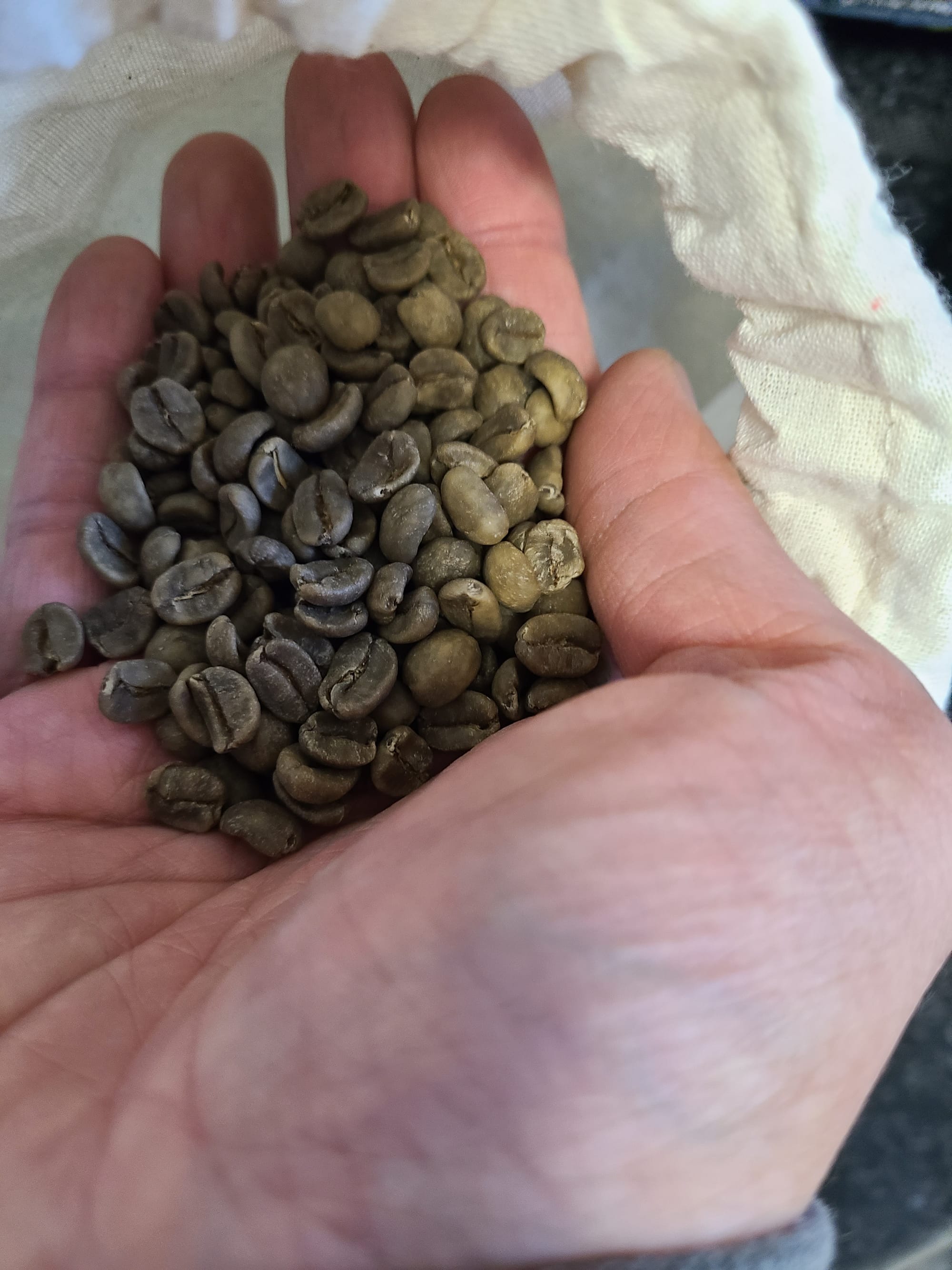Best Green Coffee Beans for Beginning Roasters: A Complete Guide (2024)
The best green coffee beans to roast for beginners, and how to get started.

We roast coffee because green coffee beans are physically extremely tough (they are seeds, after all). Roasting allows a breakdown of the shell, allowing it to become porous, which in turn allows water so that little bits of it can be taken away by the hot water. Too, we roast in order to change the chemical composition to bring out those flavors that make each type of bean taste different.
There are several different varieties of beans (Abrica, Robusta, Catimor, etc.), each with its own distinct flavor based on the ground and climate on which they grow. When getting started in roasting, you’ll almost certainly be roasting Abrica (Typica) beans if you purchase them from any major green coffee retailer online (such as Coffee Bean Corral or Sweet Maria’s), which is a good thing because the beans have usually been sorted to have a similar density and size.
This simple truth is that when you get started, it’s best to buy some cheap beans from a reputable place in some small batches so that you can experiment. Avoid ‘pea beans,’ since they look like pebbles and require more attention. Most other beans you buy, Abrica of course, will be a consistent size that you’re familiar with from the market. Below are some suggestions of what I’m talking about:
Best Green Coffee Beans for Beginners
Brazilian
Being a novice, I’m finding Brazilian beans tend to be cheaper and more forgiving. Sometimes I’m going for a lighter roast, like a blond or a light city roast, and a phone call distracts me, and then I’m suddenly left with beans that taste closer to charcoal than coffee. However, Brazilian beans like this “Brazil Dry Process” or “Brazil CHC Reserve Espresso,” handle darker full city or French roasts really well and still taste great even if when I don’t intend to roast that dark. (For example, in the description for the “Brazil Dry Process” Sweet Maria’s recommends raising the temperature up another 35F after the first crack.)
With their wide roasting windows and consistent bean size, Brazilian beans give flexibility. Santos gives you the flexibility to learn without ruining your batch. They tend to have classic chocolate and nutty flavor profile (which tend to pop with darker roasts), which means even slightly imperfect roasts still taste great.
Colombian Supremo
This is the kind of coffee that you’ll find in commercials: large, uniform-sized beans that just look like coffee we’re familiar with. They tend to taste fruitier more sugary flavors even at the darker roasts. Examples are like this “El Gato Supremo” which is described to have “citrus, brown sugar, pecan, fig, red grape, and honey” flavors. I’ve noticed that beans marketed as “Supremo” tend to have nice and loud first cracks – exactly what you need when learning to identify crucial roasting stages. (However, that might just be fresher beans.)
Guatemala Antigua
Years ago, my wife and I spent six weeks in Antigua. I remember two chief things: “Gangnam Style” blaring from the chicken buses and simply the best coffee I’ve ever had that you’d buy in brown paper bags. These medium-density beans offer predictable roast development and clear color changes, making them ideal for building your confidence. They're forgiving enough for beginners but complex enough to keep things interesting as you improve. Whenever I can, I go for these beans because they always taste chocolatey to me, even when I screw up my roast. An example of this is “La Flor Del Cafe.” They have gotten more expensive over the years, but I also find that my rate of screw-ups is far less, and frankly, it's my favorite beans to roast and give as gifts since everyone thinks I’m an all-star roaster with these beans.

Sourcing and Storage Tips
Where to Buy
- Sweet Maria's: Best for sample packs and detailed roasting notes
- Coffee Bean Corral: Great for bulk purchases. (This is where I buy almost all of my beans)
- Happy Mug Coffee: tends to be cheaper if you’re buying just single pounds
Storage Essentials For Green Coffee Beans
- Keep beans in the dry cupboard inside the house. I’ve seen recommendations for keeping them between 60-70°F, but unless you’re house is baking or freezing, this shouldn’t be a problem. (DON'T FREEZE YOUR BEANS!)
- Maintain 50-60% humidity. (That means don’t store beans under your sink).
- Use breathable bags or containers.
- Store away from direct sunlight.
- Use within 12 months of harvest date. (I find that they dry out, and you’ll know it because you won’t hear the first crack when you roast: meaning that the beans are dead.)
First Roast Success Tips
Before You Start
- Clean your roasting area
- Prepare your cooling system
- Start with small test batches (such as a 100g).
- Have your temperature monitoring ready
During the Roast
- Listen for the first crack. That’s your marker to tell you when you’re in the roast profile of blonde on up. (The beans being around 410F). The hotter and longer you roast you go from here, the darker the beans you’ll get.
- Watch for consistent color changes
- Document roast times and temperatures
- Cool beans quickly after roasting
Conclusion
Starting with forgiving beans can make the difference between frustration and success in your roasting journey. Go cheap from a good supplier, and you can take your time, practice with and learn. Once you get consistent, experiment with other beans and buy in larger bulk to offset the price difference. And remember – even "mistake" batches with forgiving beans, can usually still be drinkable. Happy roasting!